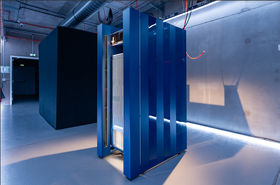Chinese exascale supercomputer OceanLight will go up against America's Frontier for this year's Gordon Bell Prize.
The annual award recognizes "outstanding achievement in high-performance computing," with finalists including researchers using OceanLight, Frontier, and pre-exascale systems Summit (US) and Fugaku (Japan).
The prize will be awarded to researchers who used the systems for specific scientific workloads - so the prize will not judge which supercomputer is more powerful.
However, the prize will take into account the power of the tool used for the science, in this case the supercomputer, and could reveal more details about each system.
OceanLight is one of two Chinese exascale systems (a system that is capable of at least a billion billion (1018) floating point operations per second) China is believed to have launched in 2021.
But the country decided not to submit either system to the Top500, a global ranking of the world's fastest supercomputers based on the High-Performance Linpack benchmark.
With the launch of the US Frontier system this year, it marked the debut of the first 'official' exascale supercomputer. It is believed to be the world's most powerful supercomputer, reaching 1.102 exaflops of sustained performance (1.5 peak) when it listed on the Top500. That number is expected to grow as it fully comes online.
We have less insight into OceanLight, but a paper published by Alibaba Group, Tsinghua University, DAMO Academy, and others provided some details. The Next Platform used that paper to estimate the performance of the system, which relies on 3.06 teraflops-peak SW26010-Pro processors. At 160 cabinets, the system could potentially be capable of 2.3 exaflops peak performance - but it is a rough estimate.
Those details came out in last year's Gordon Bell Prize submission, so the hope is more will come out in this current competition.
The supercomputer was used by the University of Science and Technology of China for the workload '2.5 million-atom ab initio electronic-structure simulation of complex metallic heterostructures with DGDFT.'
The team used OceanLight for “massively parallel implementation of discontinuous Galerkin… density functional theory." The simulations included 2.5 million atoms, used 28.1 million cores of OceanLight and achieved a parallel efficiency of 72 percent on the system.
Frontier, meanwhile, was used for 'exaflops biomedical knowledge graph analytics.' Oak Ridge's Ramakrishnan Kannan developed a new method for data mining enormous swaths of biomedical literature using graph analytics.
"We present COAST (Exascale Communication Optimized All Pairs Shortest Path), a new high-performance algorithm and implementation of the Floyd-Warshall algorithm for the world’s fastest supercomputer, Frontier.”




